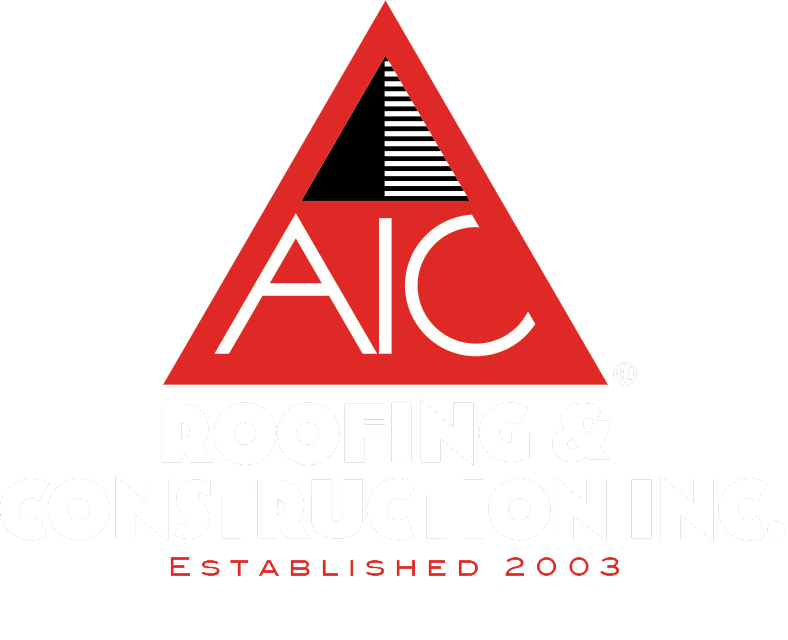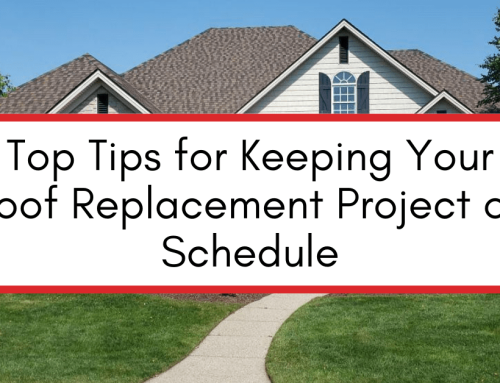At AIC Roofing, we provide our customers with a best-in-class roof replacement experience. Our goal is to exceed your expectations before, during, and after your roof replacement. As part of our mission, we want homeowners to feel knowledgeable about the components that make up their roof.
An ice and water shield, as well as underlayment, protect your home’s roof deck. Your roof deck is the base layer of your roof. Think of it as your roof’s foundation. It consists of sheets of plywood or sheathing.
Proper deck protection is critical to ensuring your roof withstands leaks. By the end of this article, you’ll understand how underlayment and an ice and water shield work to prevent leaks and why your home needs both.
What is an Ice and Water Shield?
Your roof is made up of a variety of components and materials that work together to create a whole roof system. An ice and water shield is one of these essential roofing components. It is laid on top of your decking, and its primary function is safeguarding your home from leaks. In Kentucky, regulations require that homes with a history of ice build-up at the eaves have two layers of cemented underlayment or a bituminous ice and water shield be placed along the eave edges.
An ice and water shield is installed on your roof, such as the valleys, around penetrations, and edges. These areas are most prone to leaks due to ice damming. Unless you have a special case, an ice and water shield doesn’t need to be installed on the entirety of your roof.
It’s important to note that, unlike underlayment, an ice and water shield forms a moisture-tight barrier, preventing water from leaking through nail holes on your roof.
What is Underlayment?
Between your shingles and your deck, there is a layer known as roofing underlayment. Underlayment is the last line of defense against the elements of your roof deck. While underlayment is water resistant, it is not moisture-tight like an ice and water shield.
There are a few different types of underlayment. The two primary types roofers use are Felt Paper and Synthetic. As the name might suggest, Felt Paper tears quickly and regularly incur small tears during installation. Synthetic underlayment is a newer technology, and it’s what we use in our roof replacements.
Why Do I Need Both?
Aside from local regulations requiring an ice and water shield in certain instances, having both layers ensures your roof decking and your home is protected from all types of weather. You want your new roof to perform well and last as long as possible. Having both of these layers will protect your roofing system from costly leaks.
Wrapping Up
We always recommend getting a few estimates for your roof replacement to ensure you’re getting a fair price. More importantly, you must make an apples-to-apples comparison across your estimates, as roofing estimates are not created using a “standard.”
AIC Roofing and Construction has replaced over 10,000 roofs in the central Kentucky area. We take great pride in our craftsmanship and your satisfaction. Are you considering a roof replacement? Get started with a free quote from AIC today!
3-tab attics barns chimney choosing a contractor commercial cost curb appeal DIY estimate financing flashing flat roof GAF glossary gutter replacement gutters gutter size gutter system ice dams inspections insurance missing shingles roof design roofing materials roofing system roof leak roof maintenance roof materials roof repair roof replacement roof shapes roof types shingle ratings shingles siding siding materials siding replacement skylights storm damage underlayment ventilation warranty winter







